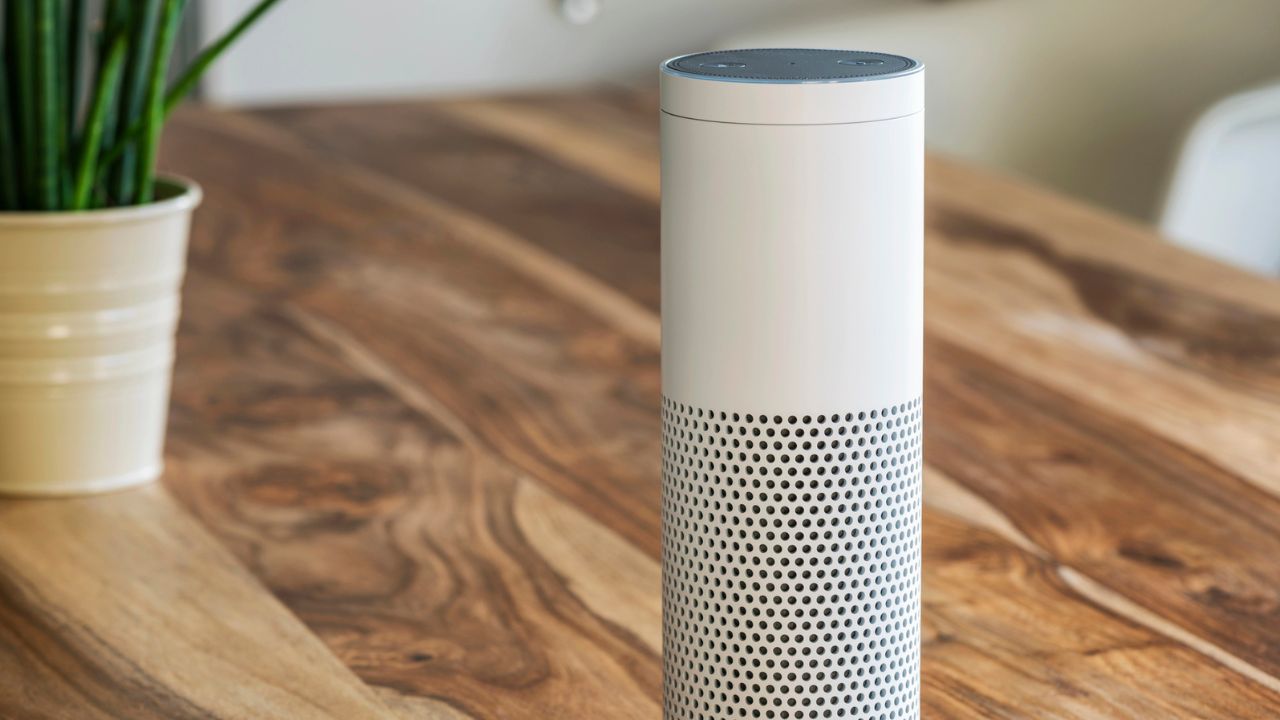Suppose you’re curious about the optimal hardware to use for Home Assistant.
In that case, this guide showcases prime selections, including Raspberry Pi, ideal for novices, and Intel NUC, tailored for more experienced users.
Discover the ideal equipment to elevate your smart home configuration and align with your financial plan.
Building a Smart Home with a Home Assistant
Home Assistant transforms your residence into a seamlessly connected and personalized smart home by leveraging its open-source platform capabilities.
It goes beyond the simple functionality of switching lights on and off, creating an intelligent environment that molds to your unique preferences.
This powerful system can interlink with numerous devices across various protocols, providing unmatched customization options for you to dictate every aspect of your smart home experience.
By incorporating advanced technologies like a random number generator algorithm, Home Assistant ensures enhanced security and seamless operation.
As a trustworthy companion in managing home automation complexities, Home Assistant ensures you’re in control—whether it’s about elevating media enjoyment, monitoring energy consumption, or bolstering security measures—all under the safeguard of Home Assistant Supervised features designed to protect personal information.
Essential Hardware for Home Assistant
Selecting the perfect hardware for your Home Assistant system is akin to choosing the core of your intelligent home network.
It is the pivotal point in ensuring seamless operation within your automated environment.
The spectrum of available hardware ranges from the diminutive Raspberry Pi to the robust Intel NUC, offering appropriate options for various preferences and financial plans.
Those envisioning a potent yet inconspicuous home server or a smart home ecosystem with Home Assistant pre-installed will find themselves spoiled for choice.
Establishing an individualized setup in home automation can hinge on whether you prefer the do-it-yourself charm of deploying a Raspberry Pi or opt for convenience through something like Home Assistant Blue, which comes ready-to-go straight out of the box.
Raspberry Pi
The Raspberry Pi is well-known for its role in do-it-yourself technology ventures, mainly because this compact computer possesses sufficient power to operate Home Assistant OS, thus providing an economical gateway into smart home automation.
For beginners seeking a balance between cost and functionality, the Raspberry Pi 3B is an ideal choice.
Nevertheless, when your existing setup falls short of fulfilling your expanding needs, upgrading to a Raspberry Pi 4 might be prudent as it provides:
- Enhanced processing speed
- Additional RAM capacity
- Support for more complex configurations
- Broader compatibility with various devices, including motion sensors and Docker containers.
Odroid-N2
The Odroid-N2 stands out as an impressive choice for individuals seeking enhanced performance. Equipped with a hexa-core processor and integrated eMMC storage, this device surpasses the Raspberry Pi by delivering faster startup speeds and minimizing delays.
Enclosed in an eye-catching blue case, the Home Assistant Blue is essentially an Odroid-N2+ with Home Assistant pre-installed.
This feature allows users to immediately refine their smart home experience effortlessly.
Intel NUC
The Intel NUC is an unmatched option for creating a sophisticated smart home environment.
Its diminutive size belies its ability to adapt and power through demands ranging from low-power configurations to robust quad-core operations.
Advanced users looking to manage an extensive collection of smart devices and intricate automation will find it particularly fitting.
The Intel NUC’s upgradeability of storage and RAM enables your Home Assistant system’s capabilities to evolve alongside your expanding needs.
This ensures the seamless incorporation of new features while maintaining smooth operation across additional functions as you enhance your setup.
Storage Solutions for Home Assistant

Storage plays a pivotal role in ensuring that your smart home operates smoothly. Selecting the appropriate storage option for your Home Assistant setup is paramount because it impacts how well the system functions and its durability over time.
When weighing up options like an SD card’s adaptability against an SSD’s durability, remember that they are the repositories holding your intelligent home’s valuable data.
The storage decision is critical to attaining swift startup times, agile user interfaces, and steadfast performance within your smart home ecosystem.
SD Card
Many users of Raspberry Pi as a platform for Home Assistant typically select SD cards as their boot medium.
It’s essential to be discerning when choosing an SD card. High-quality, Class 10 SD cards from reputable manufacturers are recommended to maintain the performance and reliability of your smart home system.
For individuals with modest storage requirements, a 32GB card often suffices. Those managing substantial amounts of logs or media may find more value in opting for larger capacities such as 64GB or beyond.
For setups that require heightened storage stability—where sensitive smart home operations hinge on memory durability—SanDisk’s High Endurance and Max Endurance lines provide the robustness essential for ensuring long-term functionality.
SSD and eMMC
In the realm of storage, velocity is vital. Solid State Drives (SSDs) and embedded MultiMediaCard (eMMC) storage swiftly outpace standard SD cards regarding boot-up times and data retrieval speeds.
This enhanced speed results in a snappy and efficient Home Assistant experience, eliminating any delay as you wait for lights to activate or cameras to establish a connection.
Those who prefer an Odroid-N2 will discover that its integrated eMMC storage significantly elevates their smart home setup by offering both dependability and the swift performance necessary for an optimal smart home environment.
Choosing the Right RAM for Home Assistant

The amount of RAM in your system is crucial for the performance capabilities of your Home Assistant setup. It dictates the level at which your smart home can efficiently juggle multiple tasks simultaneously.
Whether you have a basic configuration or an extensive smart home with numerous integrations, having ample RAM is critical to ensure seamless functionality. It’s what separates a slow and frustrating user experience from one that is quick and smooth, where actions are performed promptly without any delays.
In selecting the correct quantity of RAM for your Home Assistant system, it’s essential to consider the immediate needs and plan for future expansion.
This foresight will help guarantee that your setup remains competent in its current state while being equipped to handle upcoming advancements and additional features.
Minimum RAM Requirements
If you’re a beginner or manage a basic Home Assistant setup, you may question the amount of RAM required.
A range of 1-2 GB of RAM is adequate to support fundamental operations and some additional integrations smoothly.
Yet, turning off extra components can improve efficiency when your system expands with more smart home devices and capabilities.
Think of it as tidying up your virtual environment. This way, your smart home runs optimally without an undue burden.
More RAM for Advanced Users
An increase in RAM is particularly beneficial for users who revel in the sophistication of their smart home setup, incorporating many devices and intricate automation.
Equipping your Home Assistant with at least 4GB of RAM can substantially improve its capacity to simultaneously operate several add-ons and integrations.
This upgrade ensures your system remains efficient while overseeing a media server or handling substantial data processing tasks.
Think of it as equipping your smart home configuration with an engine built for high performance, capable of effortlessly controlling all your lights among other challenges.
Power Supply Considerations
Ensuring a constant and stable power supply is crucial for the seamless operation of your Home Assistant system.
A power disruption can lead to an unreliable smart home experience, oscillating between efficiency and unpredictability.
You must choose the correct power supply for a Raspberry Pi or any other high-requirement device. This isn’t an aspect to compromise on.
To achieve optimal functionality of your system, aim to deliver an unwavering stream of electricity capable of maintaining steady performance regardless of the load placed upon it.
Power Supply for Raspberry Pi
For those using Raspberry Pi as a platform for Home Assistant, ensuring you have an appropriate power supply is crucial to maintaining system stability and reliability.
It’s advisable to use a 5V 3A power adapter to prevent under-voltage problems, which can cause performance issues or sudden shutdowns.
The Raspberry Pi 3B will operate with a micro USB power source, while the newer Raspberry Pi 4 necessitates a USB-C type supply.
Not investing in a proper power supply could lead to regular system crashes and even damage your SD card due to improper voltage levels.
Users must select a dependable power adapter that will provide consistent support for their home automation endeavors.
Power Supply for Other Devices
Comprehending the power necessities for devices such as the Odroid-N2 and Intel NUC is crucial to guarantee their consistent functioning.
An Odroid-N2 usually needs a 12V 2A power supply, whereas various models of Intel NUC may require a 19V/3.42A or even a 19V/4.74A adapter.
These particular requirements are integral to maximizing the performance of your Home Assistant hardware while avoiding disruptions caused by issues with the power supply.

Founder of Spark Nomad, Radical FIRE, Journalist
Expertise: Personal finance and travel content
Education: Bachelor of Economics at Radboud University, Master in Finance at Radboud University, Minor in Economics at Chapman University.
Over 200 articles, essays, and short stories published across the web.
Experience: Marjolein Dilven is a journalist and founder of Radical FIRE, a personal finance platform, and Spark Nomad, a travel platform. Marjolein has a finance and economics background with a master’s in Finance. She has quit her job to travel the world, documenting her travels on Spark Nomad to help people plan their travels. Marjolein Dilven has written for publications like MSN, Associated Press, CNBC, Town News syndicate, and more.

